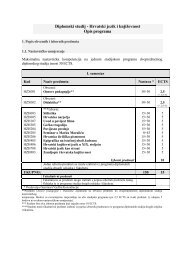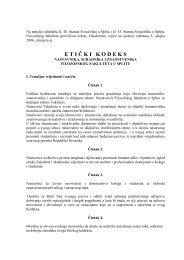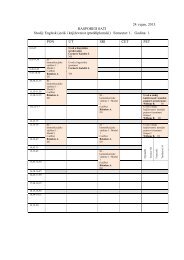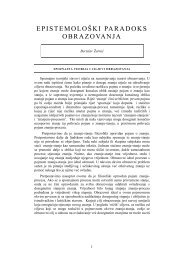Understanding Human Communication
Understanding Human Communication
Understanding Human Communication
Create successful ePaper yourself
Turn your PDF publications into a flip-book with our unique Google optimized e-Paper software.
lem of groupthink as it begins to manifest itself. If agreement comes quickly and<br />
easily, the group may be avoiding the tough but necessary search for alternatives.Beyond<br />
vigilance,a second step to discourage groupthink is to minimize status<br />
differences.If the group has a nominal leader,he or she must be careful not to<br />
use various types of power that come with the position to intimidate members.<br />
A third step involves developing a group norm that legitimizes disagreement. After<br />
members recognize that questioning one another’s positions doesn’t signal<br />
personal animosity or disloyalty,a constructive exchange of ideas can lead to topquality<br />
solutions. Sometimes it can be helpful to designate a person or subgroup<br />
as “devil’s advocate”who reminds the others about the dangers of groupthink and<br />
challenges the trend toward consensus.<br />
SUMMARY<br />
Despite the bad reputation of groups in some quarters,<br />
research shows that they are often the most effective<br />
setting for problem solving.They command greater resources,both<br />
quantitatively and qualitatively,than do either<br />
individuals or collections of people working in isolation;their<br />
work can result in greater accuracy;and the<br />
participative nature of the solutions they produce<br />
generates greater commitment from members.<br />
Groups aren’t always the best forum for solving<br />
problems.They should be used when the problem is beyond<br />
the capacity of one person to solve, when tasks<br />
are interdependent, when there is more than one desired<br />
solution or decision, and when the agreement of<br />
all members is essential.<br />
Groups use a wide variety of discussion formats<br />
when solving problems. Some use parliamentary procedure<br />
to govern decision-making procedures. Others<br />
use moderated panel discussions, symposia, or forums.The<br />
best format depends on the nature of the<br />
problem and the characteristics of the group.<br />
Since face-to-face meetings can be time-consuming<br />
and difficult to arrange, computer-mediated communication<br />
can be a good alternative for some group tasks.<br />
Some groupwork can be handled via computer or<br />
teleconferencing,where members communicate in real<br />
time over digital networks. Other taks can be handled<br />
via asychronous discussions, in which members exchange<br />
messages at their convenience. Mediated<br />
meetings provide a record of discussion and they can<br />
make it easier for normally quiet members to partici-<br />
CHAPTER 9 SOLVING PROBLEMS IN GROUPS 319<br />
CULTURAL IDIOM<br />
“devil’s advocate”: one who<br />
argues against a widely held<br />
view in order to clarify issues<br />
pate, but they can take more time and they lack the<br />
nonverbal richness of face-to-face conversation. Given<br />
the pros and cons of mediated meetings, smart communicators<br />
should give thoughtful consideration about<br />
when to use this approach.<br />
Groups stand the best chance of developing effective<br />
solutions to problems if they begin their work by<br />
identifying the problem, avoiding the mistake of failing<br />
to recognize the hidden needs of individual members.Their<br />
next step is to analyze the problem, including<br />
identification of forces both favoring and blocking<br />
progress. Only at this point should the group begin to<br />
develop possible solutions, taking care not to stifle<br />
creativity by evaluating any of them prematurely. During<br />
the implementation phase of the solution,the group<br />
should monitor the situation carefully and make any<br />
necessary changes in its plan.<br />
Most groups can expect to move through several<br />
stages as they solve a problem.The first of these stages<br />
is orientation, during which the members sound each<br />
other out.The conflict stage is characterized by partisanship<br />
and open debate over the merits of contending<br />
ideas.In the emergence stage,the group begins to move<br />
toward choosing a single solution.In the reinforcement<br />
stage, members endorse the group’s decision.<br />
Groups who pay attention only to the task dimension<br />
of their interaction risk strains in the relationships<br />
among members. Many of these interpersonal<br />
problems can be avoided by using the skills described<br />
in Chapter 7 as well as by following the guidelines in

















